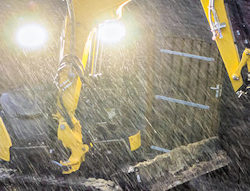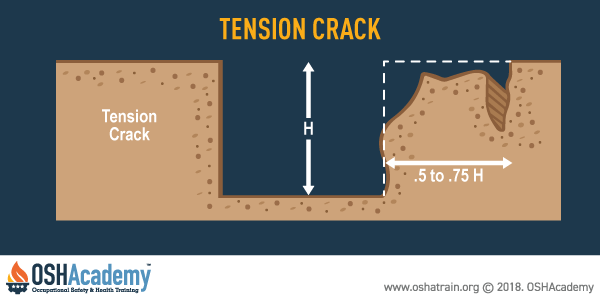Soil Instability
A number of stresses and deformations can occur in an open cut or trench causing soil instability and failure.
Moisture
Increases or decreases in soil moisture due to rain or underground seepage can decrease soil cohesion while at the same time increase the weight of the soil. These two factors can adversely affect the stability of a trench or excavation.
Tension Cracks
Tension cracks usually form at a horizontal distance of 0.5 to 0.75 times the depth of the trench, measured from the top of the vertical face of the trench.
During a visual test, the evaluator should check for crack-line openings along the failure zone that would indicate tension cracks, look for existing utilities that indicate that the soil has previously been disturbed, and observe the open side of the excavation for indications of layered geologic structuring.
Knowledge Check Choose the best answer for the question.
3-3. Tension cracks usually form at a horizontal distance of _____ .
You forgot to answer the question!


